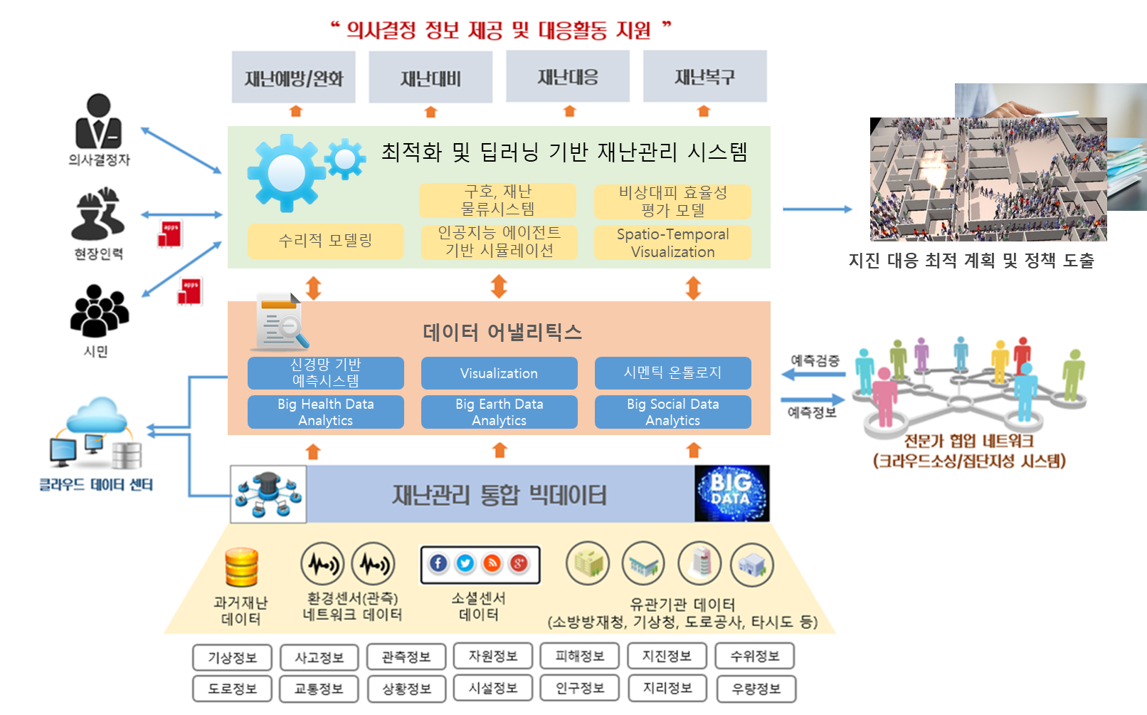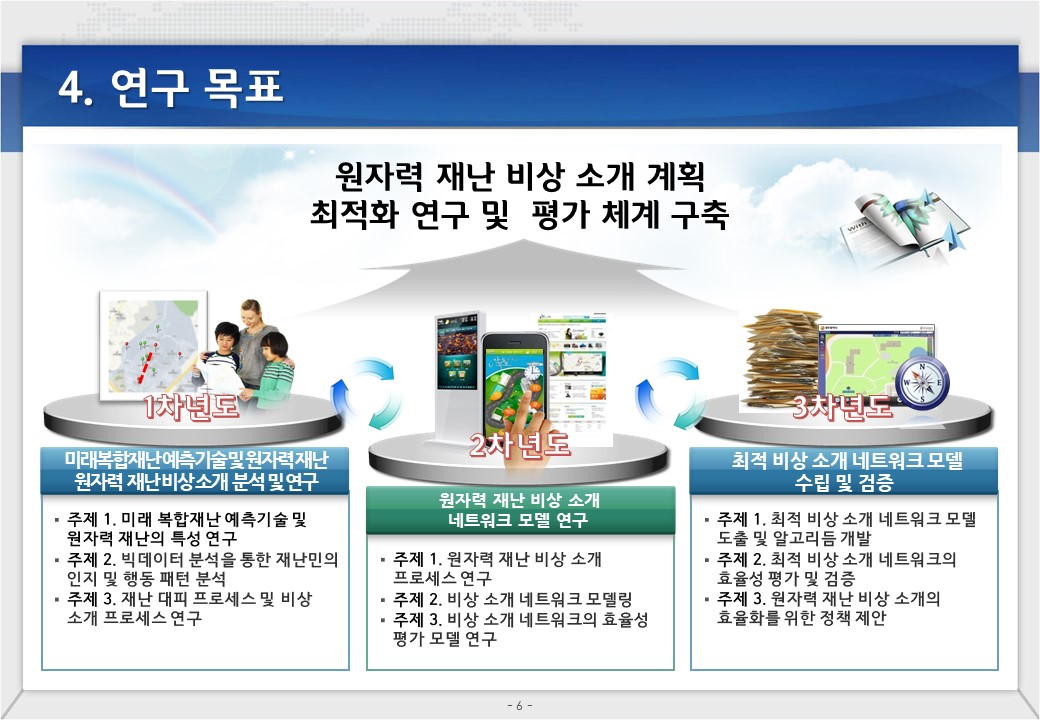19. National Research Foundation, “Pre- and Post-disaster Relief and Recovery Operation Management Planning for Earthquake Using Data Analytics”, Nov. 2018 ~ Oct. 2021 The aim of disaster relief and recovery operation management for earthquake project is to help the government and management of resources and responsibilities for dealing with the earthquake disaster. This project has 3 years plan.
18. National Research Foundation, “Disaster Management (Humanitarian Evacuation and Relief Chain Management) in Nuclear Disaster”, Nov. 2015 ~ Oct. 2018 The aim of disaster management project is to help the government and management of resources and responsibilities for dealing with all humanitarian aspects of emergencies, in particular preparedness, response and recovery in order to lessen the impact of disasters. This project has 3 years plan. The first year, we are focusing on the characteristics of nuclear disasters, behavioral patterns of residents who live in disaster areas through big data analysis. In the second year, the evacuation model is proposed by studying the process of nuclear emergency evacuation. The last year, we developed a web-based simulation tool.
17. Samsung Heavy Industry, “Transporter Planning for Large Assembly Blocks: Logistics”, Aug. 2014 ~ Mar. 2015 This project addresses the spatial scheduling problem for large assembly blocks, which arises in a shipyard assembly shop. The spatial scheduling problem is to schedule a set of jobs, of which each requires its physical space in a restricted space. This problem is complicated because both the scheduling of assemblies with different due dates and earliest starting times and the spatial allocation of blocks with different sizes and loads must be considered simultaneously. This problem under consideration aims to the minimization of both the makespan and the load balance and includes various real-world constraints, which includes the possible directional rotation of blocks, the existence of symmetric blocks, and the assignment of some blocks to designated workplaces or work teams. The problem is formulated as a mixed integer programming model and solved by a commercially available solver. A two-stage heuristic algorithm has been developed to use dispatching priority rules and a diagonal fill space allocation method, which is a modification of bottom-left-fill space allocation method. The comparison and computational results shows the proposed MIP model accommodates various constraints and the proposed heuristic algorithm solves the spatial scheduling problems effectively and efficiently.
16. Gijang City, “Research on Nuclear Disaster Preparedness Improvement”, Feb. 2013 ~ Jun. 2014
15. Ministry of Trade, Industry and Energy (MOTIE), “Center for Anti-Aging Industry Support”, Dec. 2012.
14. PNU, “System Engineering Approach to Build an Information System for Emergency Cesarean Deliveries", Feb. 2012.
13. PNU, “Endosymbiotic Evolutionary Algorithm for Vehicle Routing”, Oct. 2011.
12. PNU, “Particulate Material Informatics for Micro Component Manufacturing”, Dec. 2011.
11. NIH R01: “Defining nanomaterial-biological interactions to enhance biocompatibility and biomedical applications.”, Oct. 2007-Sept. 2012 (with Harper, S. and Tanguay, R.)
10. AFRL: “Computational and Analytic Tools to Support the Development of Environmentally-Benign Nanomaterials: Phase III”, Oct. 2009- Sep. 2010 (with Harper, S.)
9. AFRL: “Computational and Analytic Tools to Support the Development of Environmentally-Benign Nanomaterials: Phase II”, PI. Apr. 2009- Mar. 2010
8. ONAMI: “Process Modeling and Optimization in Powder Injection Molding for Semi-Conductor Containers with Nanoscale Powder.”, Sept. 2008- Aug. 2010 (with Atre, S.)
7. Oregon Metals Initiative, “Powder Injection Molding of Power Electronic Packages.”, Dec. 2007 (with Atre, S.)
6. AFRL: “Computational and Analytic Tools to Support the Development of Environmentally-Benign Nanomaterials: Phase I”, PI. Oct. 2007- Apr. 2009
5. HP OSU: “Active Learning”, PI. Jul. 2007 - Jun. 2008.
4. INTEL: “Proposal to Develop a New Graduate/Senior Undergraduate Laboratory Course on Materials Analysis.”, Mar. 2007-Feb. 2008.
3. HP TFT: “Tablet PC-based Field Study Tools for Engineering Courses and Their Impacts on Teaching and Learning.”, PI., Aug. 2006 - Jul. 2008
2. NEU President Excellence Fund: “IT-based Student Advising System Development.”, PI., Mar. 2001-Aug. 2003.
1. NEU Research and Scholarship Development Fund: “Development of Information Model for Manufacturing and Web-based Code Generation for Simulation.”, PI, Jan. 2000-Dec. 2000.






